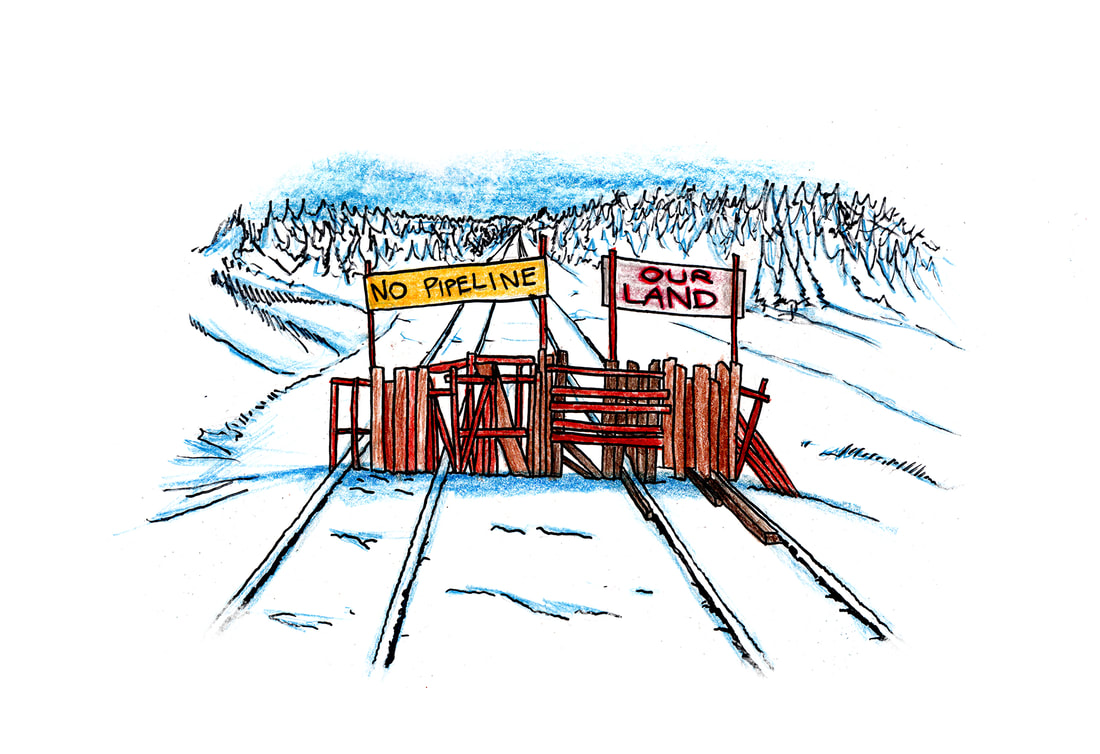|
3/5/2020 1 Comment Protesty w KanadzieWhen people talk about Canada, people often talk as though Canada is an oasis: a big beautiful multicultural country. Here, your neighbours belong to many different races, pray to different gods and speak different languages. Unlike our southern neighbours who are well known for their near constant racial confrontations, Canada has loudly preached acceptance and tolerance since the 70’s (when multiculturalism became part of the constitution). But as Canadians will know, the truth is that Canada does have a dirty secret: that racial tensions are alive and well. After years of waiting for the oil pipeline across northern BC, it was recently announced that the project got the ‘go ahead’ and construction was to begin. However, things didn't go as planned. When it was revealed that the elected officials of the Wet’suwet’en agreed to the pipeline but the hereditary chiefs were strongly against it, protests against the pipeline erupted across the country in support of the Wet’suwet’en peoples solidarity. These protests have involved blockades of railway tracks across the country. They have interrupted freight service, passenger trains. Blockades have been blamed for hurting the economy, causing shortages, and (temporary?) job loss in Via Rail and CP Rail companies. Many Canadians are angry and requesting that the blockades be removed by force no matter the cost, many even threatening to take matters into their own hands. Counter Protesters are circulating violent images of Indigenous protesters being run down by trains. Beyond the internet, impatient counter protesters have faced the protesters on their own and taken down the barricades. The government is doing its best to be patient with the protests to avoid an escalation. This decision has been praised by many, but others have understood this patience to be a weakness in the leadership of the Trudeau government. In the 90’s there was a similar situation in Ontario, however the Indigenous protesters were not met with patience but with force. In the end there was one death and the Canadian army was called in. And this is only one example of many violent outcomes when the First Nations of Canada and the authorities (even vigilantes) clash. After a month of increasing tensions, the Wet’suwet’en Crisis across Canada seems to be settling down. But, this clash between Indigenious Nations and the government is not over yet. At the heart of this crisis is not the question of who owns the land, because according to agreements between Indigenous Nations and the Canadian government, this land does belong to the First Nations. The question is how much control do Indigenous people have over their land, which is not only ancestrally theirs but as stated, it is contractually theirs as well. Do big oil companies have the right to dig for oil on the lands of the Indigenous people? Do they have the right to place a 400km pipeline through the territory? Are the Indigenous Nations allowed to refuse them?
1 Comment
|
AuthorMy name is Madison. I am from Alberta, Canada. I like to read books, go hiking and explore new cities. Even though I am Canadian, I don't watch hockey and I don't like snow. I graduated from The University of Lethbridge in 2018 after studying English Literature and Art History for six years. I have travelled to the Mexican state, Nayarit and to Tokyo, Japan. I hope to travel all over the world. Archives
June 2020
Categories |
Search by typing & pressing enter


 RSS Feed
RSS Feed